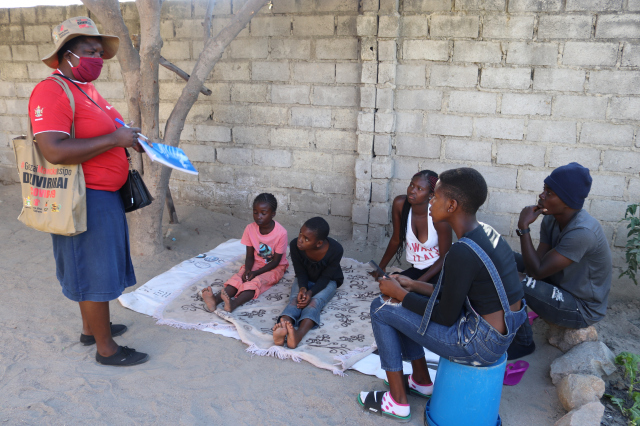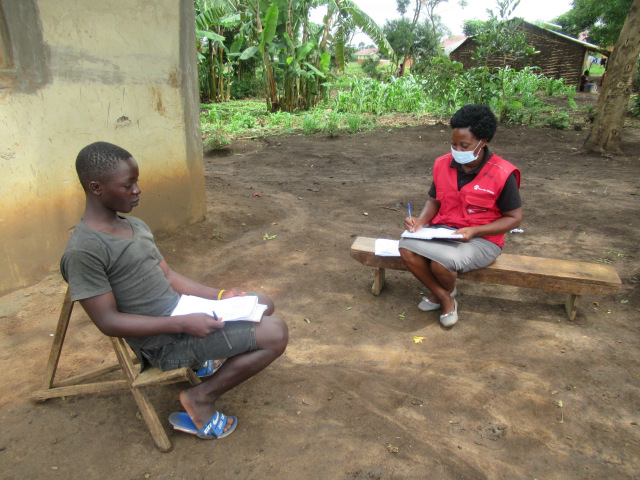By Hollie Warren, Head of Education: Save the Children
The COVID-19 pandemic has demonstrated more than ever that global crises require global solutions. In April, faced with a global health emergency like no other, the international community came together in what UK Prime Minister Boris Johnson hailed as a “new era of global health collaboration”. The World Health Organisation (WHO) led a virtual meeting where world leaders agreed to work together on a coronavirus vaccine and share research, treatments and medicines across the globe. This was followed in May with an EU-hosted virtual summit where leaders pledged nearly €7.4 billion to research COVID-19 vaccines and therapies, pledging that the money will be used to distribute any vaccine to poor countries on time and equitably.
But the COVID-19 pandemic is not just a global health emergency. Efforts to mitigate the spread of the virus – such as school closures – are having a devastating impact on the lives of children everywhere, but especially in the poorest countries. School closures put girls at risk of child marriage, which has reportedly doubled in parts of Malawi according to Care International where, even before the pandemic, around half of all girls got married before the age of 18. In Kenya, reports of teenage pregnancy have spiked according to data from the International Rescue Committee, with some areas in Northern Kenya reporting a three-fold increase in pregnancies compared with the same period last year. Girls living in refugee camps are particularly vulnerable; at the Kakuma refugee camp, 62 pregnancies were reported in June 2020 compared with 8 in June last year.

Save the Children Italy has been providing children and young people with study support and workshop activities to reduce the risk of children dropping out of school. After months of social isolation, many children and young people were finally able to meet again in the Educational Archipelago. Credit: Gianfranco Ferraro per Save the Children
A month ago, Save the Children launched our Save Our Education campaign, highlighting the impact school closures are having on children around the world. We warned that the poorest and most vulnerable children were at risk of not returning to school. Our estimates proposed that around 10 million children may never go back due to the economic consequences of the pandemic and rising child poverty.
Our team in Uganda for example have reported a doubling of teenage pregnancies, increase in child labour and child marriage, as well as increased reports of violence against children in some of the areas where we work. 15 million children have been out of school in Uganda since the end of March, including 600,000 refugee children. 85 out of 136 districts in Uganda have reported no cases of COVID-19.
Investing in education matters for protecting the lives of vulnerable children right now. Yet to date, the international community has not sufficiently recognised the huge learning crisis now exacerbated by the pandemic, and how important education is for the recovery. This has resulted in limited action and so far a shocking lack of investment in education.

Eugenia has been going door to door to raise awareness of the COVID-19 pandemic, promote learning at home for children, as well as providing psychosocial support to children in Zimbabwe. Credit: Sophie Hamandishe / Save the Children
The Global Partnership for Education stepped up quickly to the challenge of COVID-19 and has unlocked a total of $500 million to help developing countries mitigate both the immediate and long-term impacts of the pandemic. Education Cannot Wait has called on donors to fund its emergency response fund to a total of $50 million – however, to date has received just over half of this amount. Given the stakes for millions of children around the world, these are worrying indications of a failure to respond with the urgency merited.
However – this is more than just about money. A greater coordinated effort is required from the international community to strengthen the global education architecture and implement an urgent plan of action that will respond to the COVID-19 emergency and the broader learning crisis.
Save the Children is calling for a global COVID-19 education action plan, that focuses on tangible action over the next 12-18 months – particularly on ensuring all children return to school and are supported to catch up on their lost learning. This plan should set out the targeted interventions that national governments should put in place in order to support all children – but particularly the most marginalised – safely back to school. These could include: targeted cash transfers; learning assessments on return to school to assess lost learning, coupled with the appropriate catch up classes; WASH facilities in schools; and local and community based ‘back-to-school’ campaigns to promote school re-opening. This plan should be fully costed, with support from both bilateral and multilateral donors.

Distributing home learning packs in Kyangwali refugee settlement, western Uganda. While schools are closed during Covid-19, Save the Children has distributed home learning packs to more than 100,000 children across Uganda. Credit: Editor Asaba / Save the Children
Some efforts to coordinate are being made, including the Save Our Future campaign and UNESCO’s Global Education Coalition. Last week also saw a letter led by UN Special Envoy for Global Education Gordon Brown and signed by nearly 300 former and current world leaders and experts highlighting the need for great global efforts to address the education crisis. But there is a real risk that these efforts remain in an echo chamber – rather than being heard by those who can affect real change.
Our recovery from this crisis requires global cooperation and leadership on more than just vaccines. This is an unprecedented education crisis that could cause lasting damage to the futures of the COVID generation if urgent and coordinated global action is not taken today.





All very sensible and much needed, as long as the priority is that staff and children are genuinely safe. The learning assessments need to be teacher assessment – not ‘tests’ as I worry certain governments would prefer.
LikeLiked by 1 person
Children may face barriers or have different needs in returning to school because of age, gender, disability, ethnicity, refugee/asylum-seeker status, socio-economic status, or other factors. All efforts during school reopening must be inclusive and accessible for all children. This is a unique opportunity to bring all children into school, both returning students and children previously out of school.
LikeLike
I completely agree with this article. Because of the coronavirus, the world community has many problems. We can see the terrible effects of a pandemic around the world. In this difficult time, countries must support each other. But developing countries need the most support. I am very pleased to learn that world organizations have allocated funds for education in Uganda and other African countries. The pandemic has hit many areas of our lives, but the level of education must remain the same.
LikeLike
yes agree, because the time lost caused by pandemic will affect the children
LikeLike
Pingback: Why the world urgently needs a global plan to get all children safely back to school – Musings of a teacher, academic and pilgrim